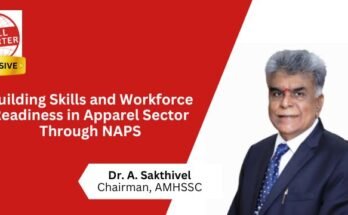RPL by definition and common understanding across the globe is the process of formally recognizing a candidate’s previous achievements from a range of activities, towards part of a qualification and not just a skill certification component to enable Indian youth to take on industry relevant skill certification which will help them to secure a better livelihood as described in the skill development’s flagship scheme PMKVY. The Government has laid great emphasis on RPL that is why 72.5% target allocation of PMKVY 3.0 is in favor of RPL, however, corresponding efforts to strengthen the system to deliver this component require attention.
There are guidelines on different types of RPL, to be precise 5, and maybe these are more extensive than the ones available in any other country, however, implementation gaps exist which restrict the RPL process to reach its full potential. The most important activity in the RPL process is counseling and evidence collection to establish the base knowledge and skills of the applicant, which in most of the 5 types of RPL has been left to the weakest link in the Indian Skills value chain, i.e the Trainer. Maybe in current circumstances, there is limited alternative, however, no visible effort is being made to substitute the trainer with a trained and certified skills counselor.
The evidence to support the knowledge and skills of the applicant must confirm that the person has shown competence over a period of time and can work under different conditions. It is this segment of the process which makes RPL assessment more deliberate and time-consuming when compared to summative assessment after a regular training cycle. The trainer even after undergoing the Training of Trainers (TOT) capsule does not experience this aspect. It is not advisable to have a fixed list of evidence that must be produced by the potential candidate, since majority of candidates will be from the unorganized sector, however, it is important to possess an indicative list of evidences that describe / showcase / demonstrate the current level of the candidate. The trainer / assessor / counselor must be competent enough to extract the current level and document it as a base evidence in case the candidate is unable to produce valid documents.
Ideally, RPL should be focused on the “individual” candidate and the entire process must assist the individual to bridge the skill gap if any. Practically, this individual must become a part of the group / batch where different candidates may require different competency enhancements to achieve the desired level of the qualification, hence, enough flexibility must be available with the training provider to customize the bridge course content for every batch, if required. The course content and all changes must be supported by RPL evidence gathered for the batch. It is this key aspect that the RPL monitoring team must focus on, in addition to other administrative aspects.
The PMKVY 3.0 data on the portal shows 89.9% certified against the total numbers assessed. This indicates that either our candidate selection process for RPL is very evolved or the assessment process is lenient. Correspondingly, different impact studies for RPL under PMKVY 2.0 indicate a positive outcome with about 35% to 47% of surveyed candidates acknowledging an increase in earnings.
RPL can be a game changer, however, to harness its full potential, the process requires strengthening. Currently, it is a case of a glass half full or half empty. The fact is that it is still half and requires conscious and consistent effort to make it full.
Disclaimer: The views expressed in the article above are those of the author Mr. Inder Gahlaut, Independent Consultant, Skills Development. The matter and intent of this article has not been edited by skillreporter.com. SkillReporter shall not be responsible for any damage if caused to any person/ organization directly or indirectly.



